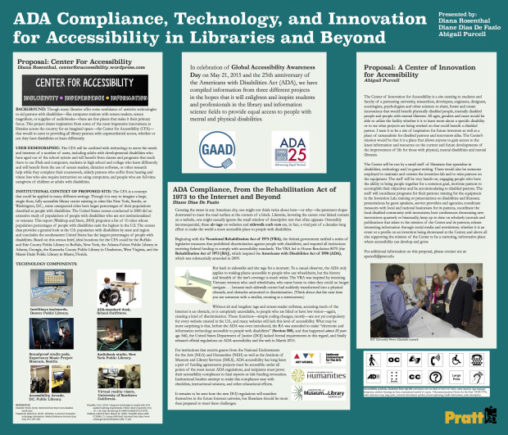Tag: technologyPage 3 of 4
Our project, Artists’ Books Holdings, is an attempt to analyze and visualize data about artists’ books holdings on an international scale. This project is a work in progress created in LIS 644- Programming for cultural heritage. It illustrates our ability to work with data in a programmatic manner and create visualizations that represent data in a more human readable manner.
This study aims to shed light on conversations of surveillance over the past 40 years of American discourse, using a corpus of Congressional records, mainstream and independent news sources, movie scrips and reviews, and archival materials. By comparing general and specific sentiment measurement across these various sources, we examine points of similarity and difference in attitude across the present and past, cultural and countercultural, institutional and popular with regard to surveillance—watching surveillance, as it were, through assemblages of text and data.
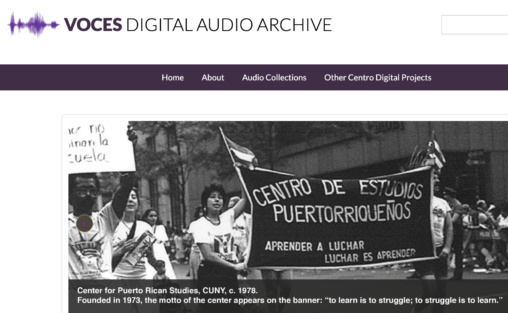
Coral will introduce the Voces Digital Audio Archive, an online archive created by students in LIS 665 that documents the Puerto Rican diaspora. Includes a discussion of digitization, curation, metadata and experience design of this collaborative project with the Archives of the Center for Puerto Rican Studies (CUNY).
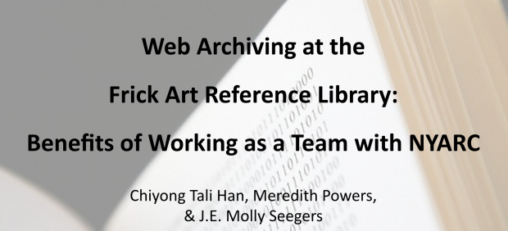
NYARC implemented a web archiving program to preserve born-digital art resources and develop a sustainable model for archiving dynamic, image-based web content. As IMLS grant-funded interns for web archiving, we spent two semesters at the Frick Art Reference Library working on various facets for capturing online art resources.
This paper covers how different folksonomy based systems can be integrated into the public library to move towards Library 2.0. These programs can help show how the library is involved in the community. I also discuss how folkonomy can help patrons discover new books through discovery.
Community groups and activists advocating for social and political change often create archives to preserve and define their own stories. This study is an overview of the unique challenges that non-traditional, independent archives face in the management of born-digital content, including a discussion of existing resources and collaborative solutions.
How do librarians weigh the risks and rewards of switching to any Open Source Software (OSS), particularly those systems that run major library functions? The goal of this project was to research and review how business models for OSS companies, programming language, sponsorship, and type of Open Source license affect the sustainability of OSS projects. This is helpful to librarians in assessing the risks of adapting any OSS by comparing the needs of libraries with the overall Open Source marketplace.
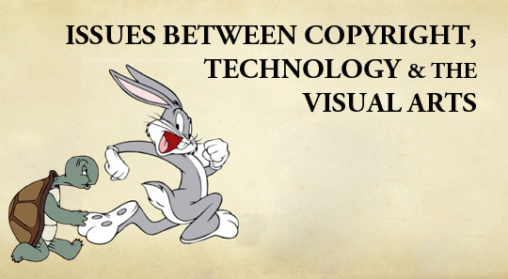
In this digital era, the US Copyright office is not keeping up with technological development, which is keeping it from protecting the copyright of artists. They are the tortoise to technology’s hare, who keeps moving the finish line further ahead on the track. As technology alters our society and how we define visual art, how will visual artists control their copyright?
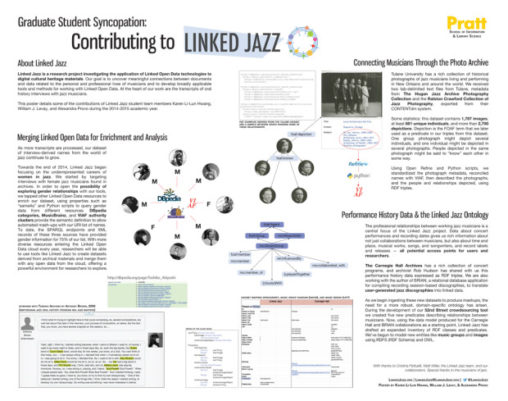
This poster highlights our research as student members of the Linked Jazz project, an ongoing exploration in applying Linked Open Data (LOD) technologies to cultural heritage materials. Research directions include the use of LOD for dataset enrichment in digital humanities research; creating RDF triples to describe image resource types; and mapping elements from various music and jazz databases to assign entities and properties from ontologies.
This documentary was developed for Brooklyn Connections, an educational program that uses BPL’s local archive housed to create resources for schools. The documentary focuses on a few key pieces of ephemera from the Civil Rights Movement and challenges students to think critically about the events of that era and connect them to social conditions in Brooklyn today.
In LIS 680, this small group developed a walking tour of Greenpoint in collaboration with Brooklyn Connections, an educational program at Brooklyn Public library that uses primary source resources from the Brooklyn Collection to teach history and information literacy to Brooklyn students. By using primary source documents from the past and matching them with present-day locations, then plotting them on a map using History Pin, the students have created a resource and accompanying lesson plans that Brooklyn teachers can use.
The Brooklyn Connections PSA is a short video designed to encourage teachers to participate in the Brooklyn Connections program at Brooklyn Public Library with their classes. By exploring the programs mission and goals, and showing some of the fantastic projects completed with primary sources with the BC staff, this small group created a PSA that will be used by BC to promote their program on their website.
Mobile digital information resources based in special collections! A WordPress-based pathfinder to the history of the American Revolution in New York City (1776-1783), exploring locations in Brooklyn, Manhattan, Staten Island, Queens, etc., and utilizing resources from NYPL special and digital collections. I also created a Google map of important sites.
The idea that writing transmutes our spatial thinking towards progress has been apparent in the skill and pride of scholarly author’s material. In this project, I challenge the cultural operating system of erudition strictly from a written narrative. As we read, we are engineering a deictic shift experiencing a connection to an author’s mental maps, nonetheless how accurate is our spatial analysis? What if a classroom used GIS as a forum for discussion, a place where our mental maps and background knowledge met. I simply ask the question, can GIS produce alternated realities to evoke inquiry altering our predispositions on a topic?
During student teaching LIS 690 Claudio and his cooperating teacher created a portable makerspace called the Maker Basket for the school’s library. The basket has laminated cards with projects ranging from making a friendship bracelet to coding Scratch. The project has been a huge success in the library and Claudio has a thoughtful presentation that includes findings from his review of the maker basket’s first semester and a literature review as well.
For this project, we wrote Python scripts to manipulate data from the Spanish Artists Dictionary, a research resource created by the Frick Art Reference Library. The first portion focused on distilling and organizing data in order to create visualizations using Tableau Public, while the second portion involved using Python to clean and enrich the dataset by matching names against an authority list of subject headings. This presentation will outline the two parts of the project and explain how Python was applied to a cultural heritage dataset.
This project centered on the creation of a linked-data friendly JSON-LD schema for storage and retrieval of cemetery records. I used python scripts to query a crowd-sourced database (BillionGraves.com), normalize the data and ingest it in the JSON-LD schema.
